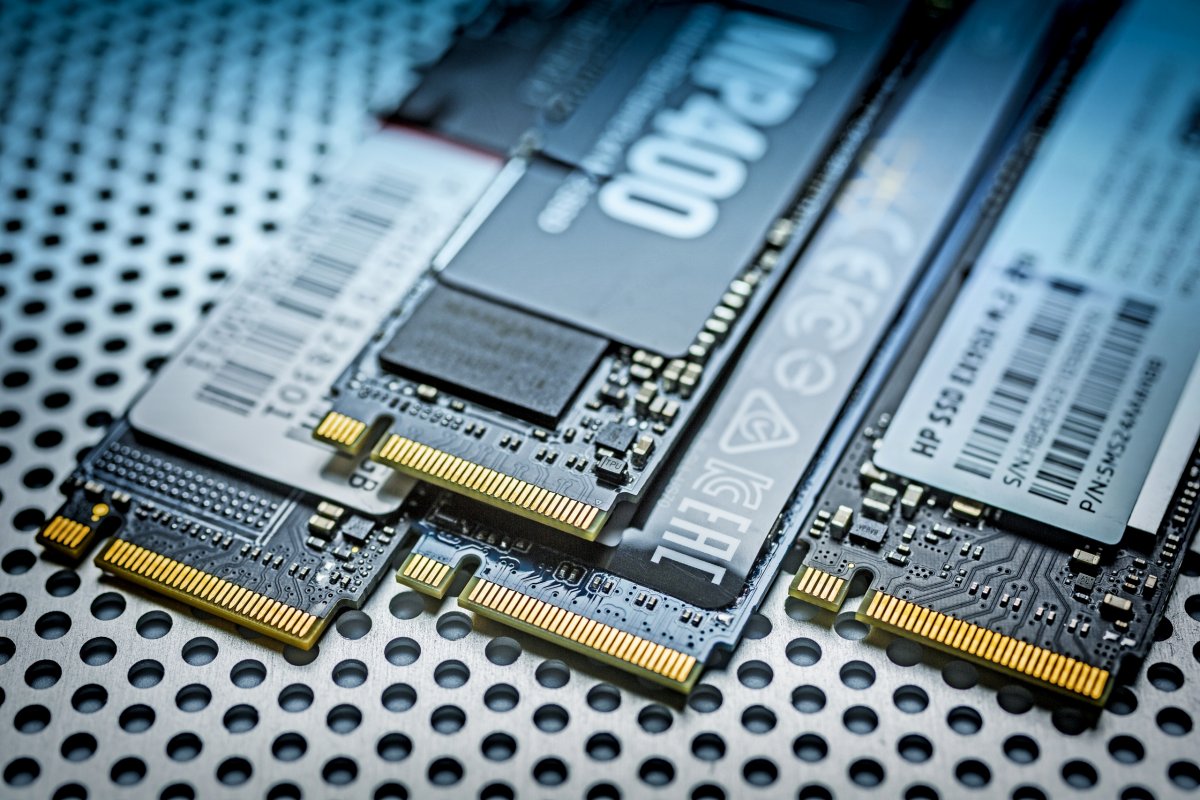SSDs, or solid-state drives, are currently available at very low prices, with some offering 2 terabytes (TB) of storage for less than 80 euros. However, it’s important to be cautious when purchasing cheap SSDs and pay attention to certain details and warning signs. Cheap SSDs often come with slightly older chips, such as slower controllers and NAND flash memory components. These controllers may control fewer parallel flash channels and lack a DRAM cache. While some cheap SSDs have PCIe 3.0 controllers, they may not fully utilize the transfer rates that are possible with them.
In terms of performance, most budget SSDs utilize either triple-level cell flash (TLC) or slower quadruple-level cell flash (QLC). These SSDs use a portion of the flash memory as a cache in faster single-level cell (SLC) mode. However, due to the slower chips and simpler wiring, cheap SSDs experience a significant drop in data transfer rates during long write processes. Nevertheless, for typical PC use, especially in office computers, this disadvantage is not noticeable.
Another potential drawback of cheap SSDs is their lower guaranteed overall write performance. Some may have comparably low values in terms of endurance, although even values around 200 TBW (terabytes written) are usually sufficient for more than five years of PC use. Additionally, cheap SSDs often come with shorter warranty periods and lack firmware updates and convenient tools for firmware updates or diagnostics. Furthermore, imprecise data sheets and the absence of support contacts in the EU can make it challenging to address any issues with the SSD.
While there are no reliable figures to suggest that cheap SSDs fail more often than expensive ones, some limitations in cheap SSDs can increase the likelihood of problems. Neglected firmware maintenance by manufacturers can lead to hidden weaknesses that cause failures. The combination of different controllers and flash chips in small quantities makes it difficult for manufacturers to detect serial errors and optimize the firmware.
When it comes to counterfeit SSDs, there is a distinction between internal (SATA, PCIe) and external (USB) SSDs. Fake external SSDs are frequently found on trading platforms like eBay and AliExpress. These fakes often claim unrealistically high capacities of more than 10 TB but have suspiciously low prices. Flash memory is not inexpensive, so it’s important to be cautious when encountering such deals. While there haven’t been any counterfeit branded SSDs reported yet, it’s still advisable to be vigilant. Buying SSDs from well-known brands with precise information about the product and a matching data sheet helps reduce the risk of purchasing a fake.
Endurance claims for SSDs are usually provided in TBW (terabytes written) and DWPD (drive writes per day). Each NAND flash cell has a limited number of write or erase cycles before it can no longer be overwritten. However, thanks to error correction functions and wear leveling techniques, SSD controllers and firmware ensure reliable and long-lasting operation. A typical office PC writes less than 20 GB to the SSD per day, which adds up to around 4.5 TB per year. Even with higher loads, a cheap SSD should last more than five years. However, it is uncommon to find warranties longer than three years in this price range.
The slower data transfer rate of some SSDs is unlikely to noticeably slow down a PC during long write processes. Most SSDs with TLC or QLC NAND flash use a dynamic portion of their capacity as a fast write cache. This cache can often be filled at speeds of 2 GB/s or faster, while the actual write speed of the flash chips may be below 100 megabytes/s. However, in practice, PCs typically write shorter data packets rather than large amounts of data at once. Therefore, the continuous write performance of an SSD does not significantly affect typical PC usage.
Manufacturers equipping SSDs with different NAND flash chips and controllers despite having the same type designation can be problematic. This means that performance may vary among SSDs with the same type designation, as different components are used in each production batch. This affects data transfer rates, latency, power consumption, heating, compatibility, and durability. Manufacturers are only responsible for the data specified in the data sheet at the time of purchase, so it’s important to check and save this information before buying.
In conclusion, while cheap SSDs offer affordability, they often come with certain disadvantages such as older chips, slower controllers, and lower guaranteed overall write performance. It’s crucial to carefully consider important details before purchasing a cheap SSD, especially when it comes to warranty, firmware support, and precise product information. Additionally, it’s important to be cautious of counterfeit SSDs, particularly when buying from unknown retailers or encountering suspiciously low prices.



